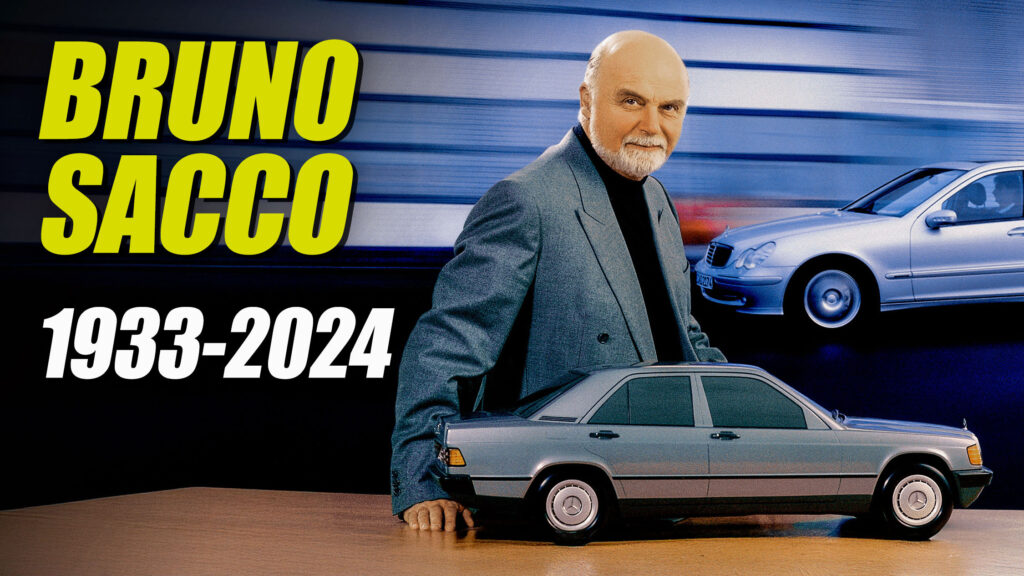- Bruno Sacco passed away at 90 leaving behind a legacy of iconic Mercedes designs.
- Sacca was born in Italy but worked for Mercedes from 1958 until his retirement in 1999.
- Key cars he designed or oversaw include the W201 190, W124 E-Class, R129 SL and W126 S-Class.
Bruno Sacco, the visionary behind some of Mercedes’ best-loved and most influential cars, has passed away at the age of 90. Though he was born in Italy and began his career working at Turin’s Carrozzeria Ghia, Sacco joined Mercedes in 1958 when he was only in his mid 20s and he was still there 41 years later when called time on the car business.
Related: Who’s The Best Car Designer Ever?
Rising from second stylist to head of body design and dimensional concepts, then chief engineer and ultimately, overall design chief, Sacco either personally created or oversaw the design of countless key Mercedes cars, buses and trucks, some of which broke new ground for the company. Many of them still look incredibly modern decades later.
Let’s salute the Mercedes legend by taking a look at some of his greatest Mercedes vehicles.
Rotary concept (C111) 1970
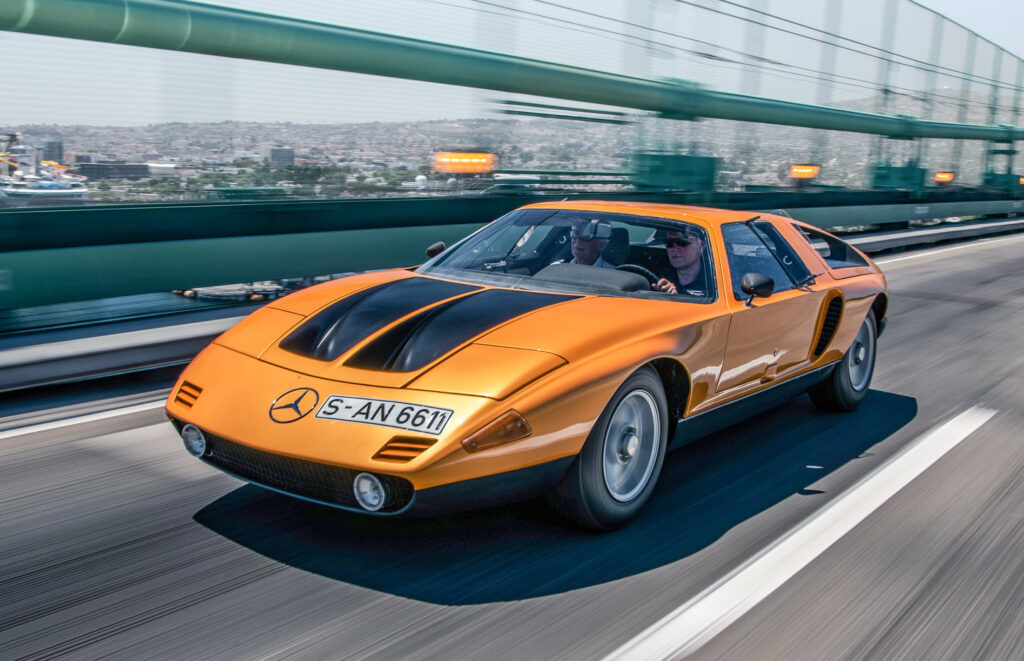
Mercedes built a string of C111 concepts starting in 1969 to test various bits of tech, including Wankel rotary power. The most beautiful, and the one that looked like it could have cut it as a production supercar, was the the Sacco-penned C111-11, whose design mixed pop-up lights, gullwing doors, a pass-through aero treatment for the nose like a modern 911 GT3, and Maserati Bora-style flying buttresses.
E-Class wagon (S123) 1977
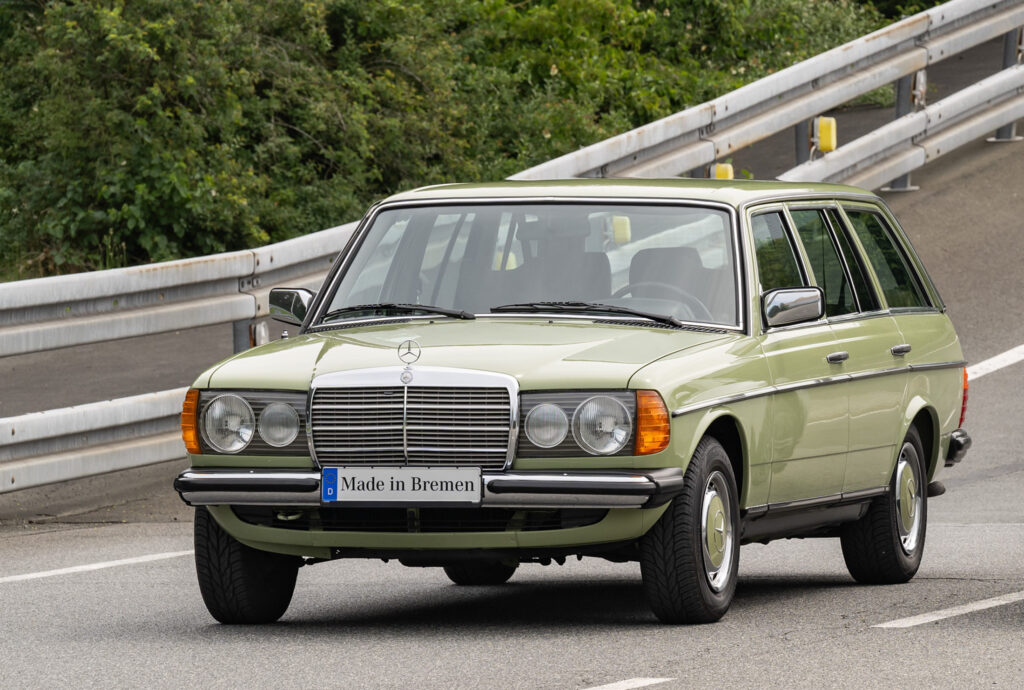
It’s hard to imagine a world without Mercedes wagons, but until the firm introduced a squareback version of the W123 sedan in 1977, the only way to get a wagon was by paying a coachbuilder to get chopping.
SEC (C126) 1981
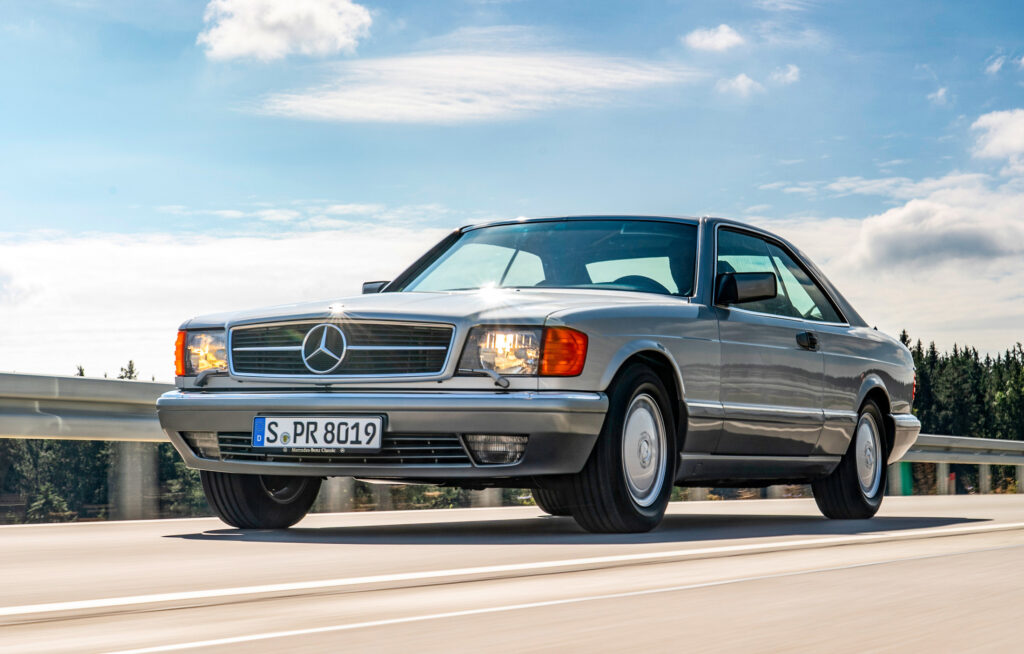
Sacco was involved in the design of the 1979 W126 S-Class, but it’s that car’s C126 coupe variant that he was really proud of. He apparently kept a dark blue 560 SEC in his garage well into his retirement.
190 (W201) 1982
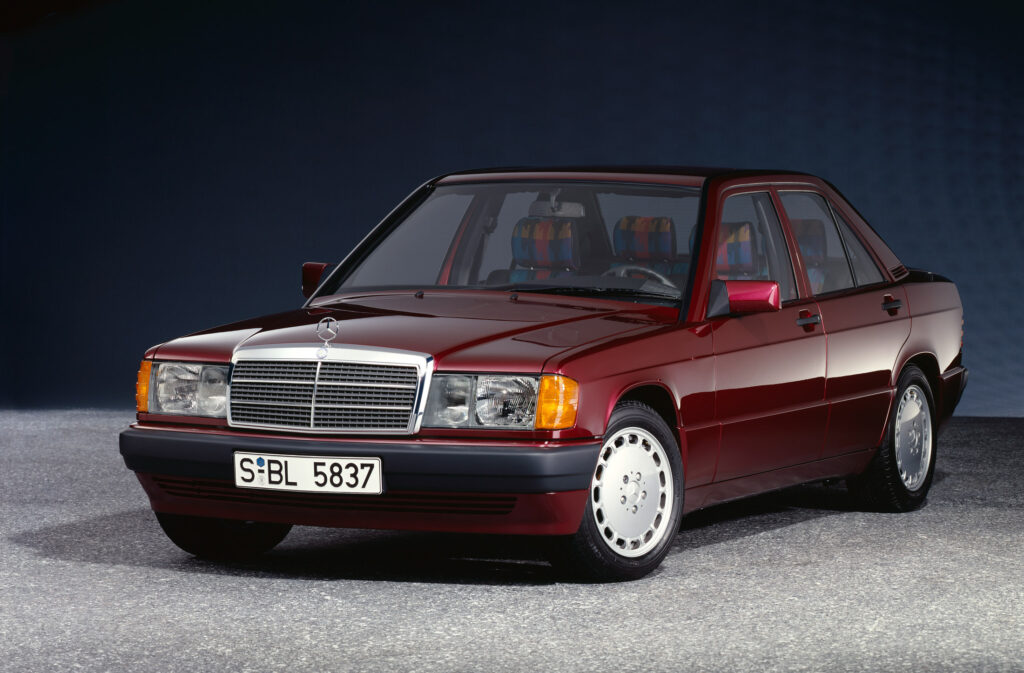
Everyone loves the BMW E30, but Mercedes’ rival to that car, the 190, was light years ahead in terms of design. Sacco incorporated aero features while still retaining the traditional Mercedes face, and a taper to the rear quarters made it appear even smaller than it was. The 190 was a game-changer for the brand, unlocking a new, younger audience, and laying out a design template that the bigger W124 would follow two years later.
SL (R129) 1989
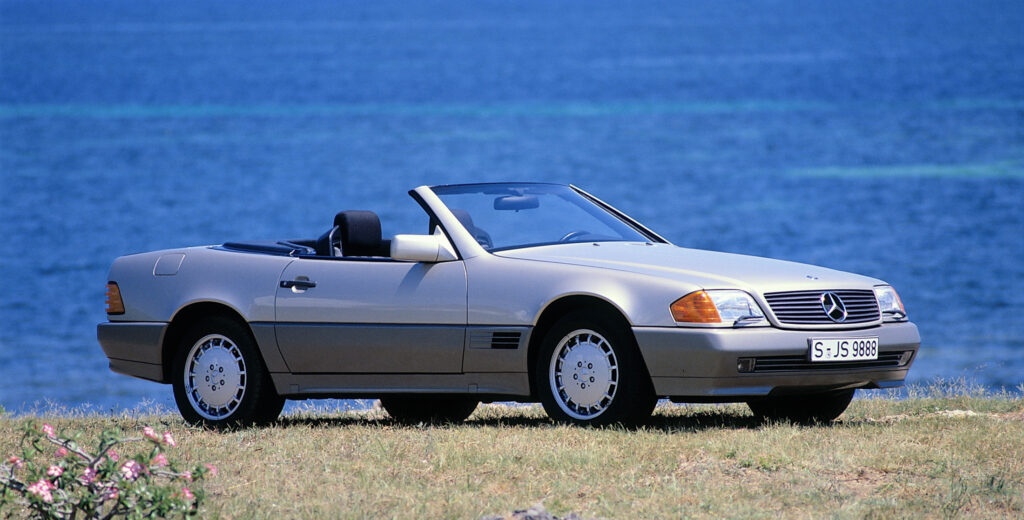
Mercedes design tends to evolve slowly and carefully from one model generation to the next. But Sacco’s 1989 SL looked nothing like the chrome-laden classic R107 SL that it replaced. Granted, the R107 had debuted in 1971, meaning it was long over due for replacement, but still, this was a bold move – and one that paid off.
M-Class (W163) 1997
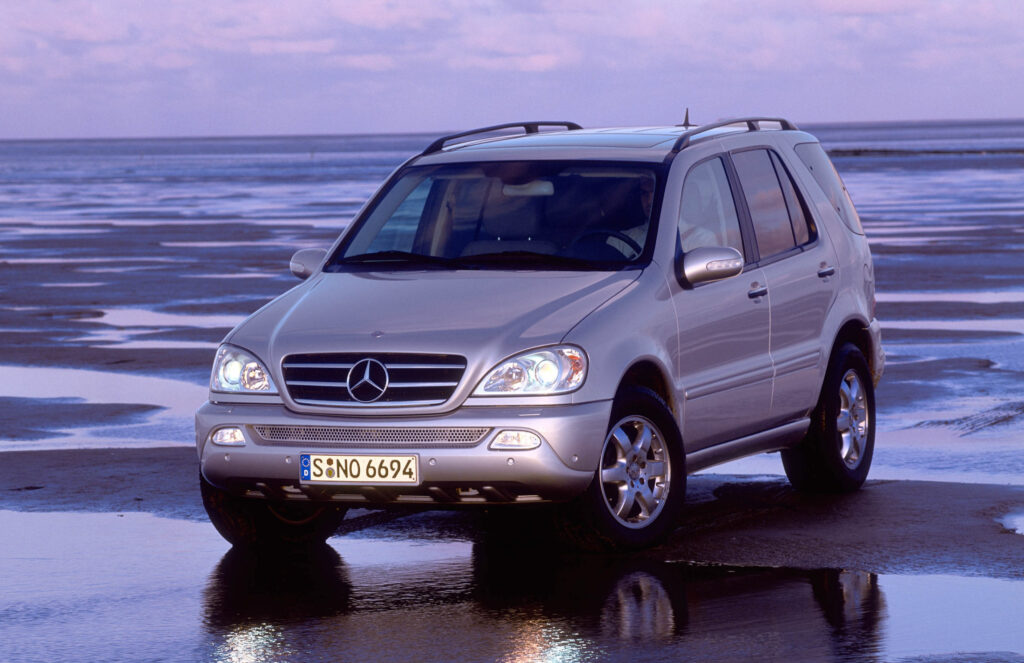
We seem to have forgotten what a big deal the original M-Class was, both for Mercedes and luxury cars. The firm’s first American-built vehicle, it arrived long after the Range Rover, but before the BMW X5 and Porsche Cayenne that have stolen its thunder since. The W163’s design by Sacco (and Peter Pfeiffer) hasn’t lasted nearly as well as some of his other creations, but it remains significant.
A-Class (W168) 1997
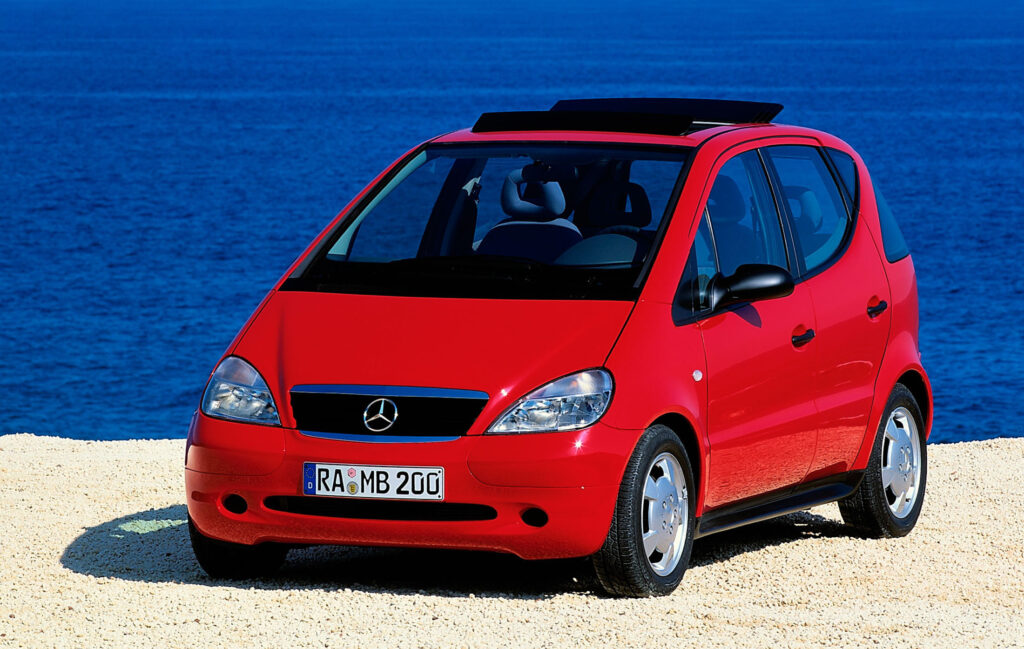
The design of the radical, original A-Class was the work of Steve Mattin, but we ought to give Sacco some credit as the head of design who helped push that wild shape through to production.
CL-Class (C215) 1999
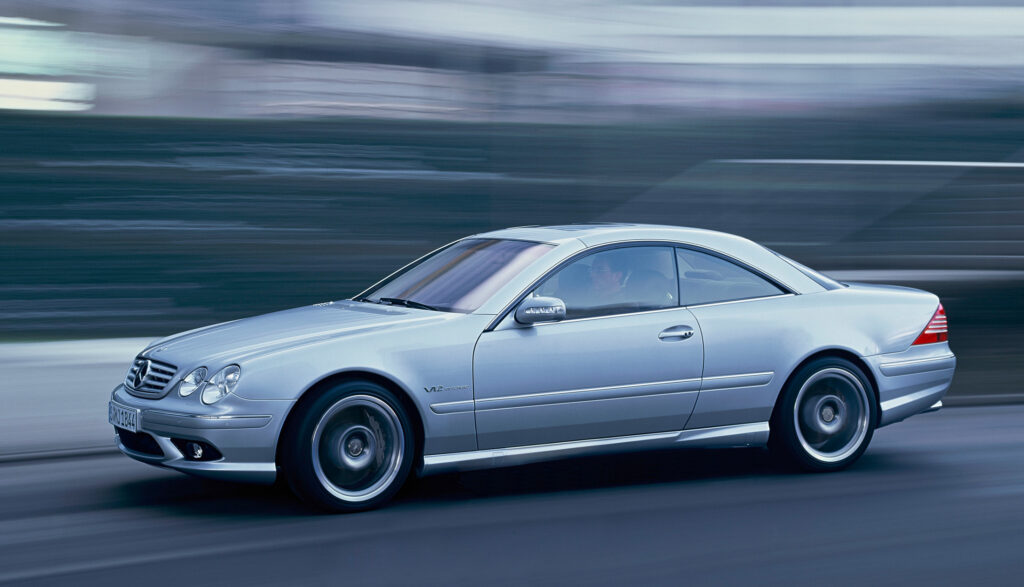
Mercedes says the 1998 W220 S-Class and its 1999 C215 CL coupe sister were the last two cars Sacco was responsible for before retiring (though we find it hard to believe he didn’t have a say on the 2002 R230 SL). The W220 still looks contemporary, but again its the coupe that really stands out, its C-pillars shaped to give a subtle nod to the brand’s classic 1960s coupes, and also helping make such a huge car look almost lean.




